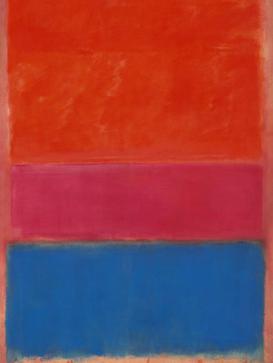Creativity is one of the idols of our time, at least in the sense in which it’s often defined. Many regard creativity as nothing more than self-expression. Give a man a paintbrush, watercolors, and paper, and whatever proceeds is “creative.”

This false view of creativity stems from man’s desire to be God. God can create ex nihilo, “out of nothing.” Man likes to fool himself into thinking he can do the same: he need not aspire to any concept of objective beauty, he need not learn from and imitate great artists who have come before him, he need look nowhere else for inspiration than within himself. Even if there happens to be some external inspiration, “art” becomes nothing more than the artist’s personal reaction to it, not an actual attempt to represent something outside of himself. People are praised in the art world for being daring and brave and rejecting long-held standards, for being true to themselves (you don’t hear much praise for being true to reality).
Thus we get such “masterpieces” as the one here, titled No 1 (Royal Red and Blue) by Mark Rothko (1954), which sold in 2012 for $75.1 million. If you’re thinking, “My kindergartener could do that!” you’re right.
Contrast this view of creativity with the view that has predominated over the course of history. It was long held that creativity could not proceed apart from imitation. One must copy things that exist outside of oneself (and do so for a long time) before acquiring the ability to be creative.
Leonardo da Vinci
Consider Leonardo da Vinci (1452-1519), universally acknowledged as one of the greatest painters who ever lived. He supplemented his natural talent with careful study under other painters, and his imitation of reality was the foundation of his creativity. Here are some particulars.
One day Leonardo’s father brought him a round piece of wood that a friend of his wanted to be painted. Leonardo had the wood prepared.
“Then…he began to think what he could paint upon it that would frighten every one that saw it, having the effect of the head of Medusa. So he brought for this purpose to his room, which no one entered but himself, lizards, grasshoppers, serpents, butterflies, locusts, bats, and other strange animals of the kind, and from them all he produced a great animal so horrible and fearful that it seemed to poison the air with its fiery breath.”
Notice that Leonardo didn’t make something up out of his mind, but gathered about himself many physical things from the created world to imitate. The result was so life-like that, when Leonardo’s father saw it, he almost ran from the room in fear.
Leonardo approached the human face and body similarly: “Leonardo was so pleased whenever he saw a strange head or beard or hair of unusual appearance that he would follow such a person a whole day, and so learn him by heart, that when he reached home he could draw him as if he were present.”
For Leonardo, imitation came first and creativity proceeded. He sought to represent a reality that existed outside of himself, and so he spent countless hours studying the creatures that comprise that reality.
This was even the case with the famous smile of Mona Lisa:
“Leonardo undertook to paint for Francesco del Giocondo a portrait of Mona Lisa his wife, but having spent four years upon it, left it unfinished. This work now belongs to King Francis of France, and whoever wishes to see how art can imitate nature may learn from this head. Mona Lisa being most beautiful, he used, while he was painting her, to have men to sing and play to her and buffoons to amuse her, to take away that look of melancholy which is so often seen in portraits; and in this of Leonardo’s there is a peaceful smile more divine than human.”
Did you catch that? Leonardo didn’t contrive the Mona Lisa smile with paint, but actually made her smile that smile and then imitated it with paint.
Imitation, Then Creativity
Imitation must precede creativity and ever remain part of it. This is our approach to art at Mount Hope. Art lessons consist primarily of imitation. This is not a hindrance to creativity, but the only road to it. Miss Hahn’s class imitated the painting All Saints by Fra Angelico and colored pictures of The Annunciation by the same artist. Mrs. Hill’s class drew the hands of God and Adam, imitating Michaelangelo’s painting on the ceiling of the Sistine Chapel. My class learned a Gothic calligraphy hand, imitating medieval manuscripts. Through imitation, especially the imitation of objectively beautiful things, students can become truly creative.
In Christ,
Pastor Richard
Quotes are from the life of Leonardo da Vinci by Giorgio Vasari, translated by Gaston du C. de Vere.
Banner painting is The Last Supper by Leonardo da Vinci, 1498.
